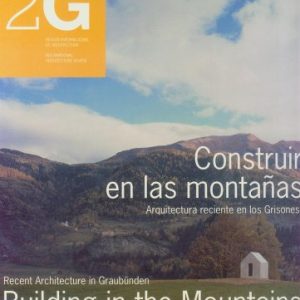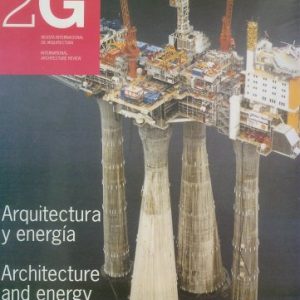-

$55.00
2G 14 Building in the Mountains. Rústica 30 x 23 cm 144 pp pages illustrated in colour text: english/español Quarterly ISSN: 1136·9647 The attention Swiss architecture has received in recent years has mainly focused on a small number of architects whose work has appeared on the covers of the specialized press. Extending throughout the Modern Movement, this is an architecture with its roots in a rich building tradition. In Graubünden, under the attentive gaze of maestro Peter Zumthor, a group of young architects educated at the ETH in Zurich, many of whom are former assistants in Zumthor’s studio, demonstrate the extraordinary quality of the architectonic production of this small German-speaking region of Switzerland.
-

$55.00
Paperback 30 x 23 cm 144 pp color illustrated pages text: english/español Quarterly publication ISSN: 1136·9647 This issue investigates which energy architectures shape and express the world in which we live, and how they do so. Present and participate in the energy discourse -which is central to industrialized societies- and discover a world that had been hidden for a long time: the territory where energy is produced and transported. There are many reasons to address this issue at this time: negative reasons that reflect the state of the world, a state that -as we all know since the Rio summit- is due to energy policy decisions; and positive reasons that are related to a recent phenomenon: the new energy architecture. This -that is, the architecture of transformer stations, substations, hydroelectric plants, etc.- has increased in importance in the last decade. Several projects, mostly European, combine high architectural quality and the desire to “be seen” (aspects that are naturally related). Its new visibility recalls the “golden age” of the architecture of electricity that took place between 1900 and the end of World War II, and that is presented as a vigorous alternative to the anonymous

